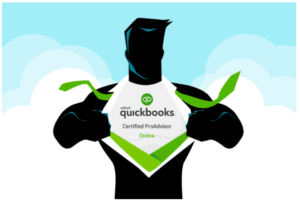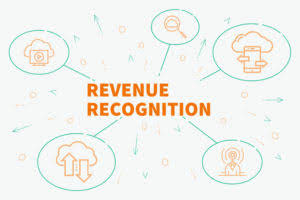
In the world of accounting, a liability refers to a company’s financial obligations or debts that arise during the course of business operations. These are obligations owed to other entities, which must be fulfilled in the future, usually by transferring assets or providing services. Liabilities play a crucial role in a company’s financial health, as they fund business operations and impact the company’s overall solvency. Current assets represent all the assets of a company that are expected to be conveniently sold, consumed, used, or exhausted through standard business operations within one year.
How to account for liabilities
This basic concept of liability is the same whether you’re discussing personal or business liabilities, but there’s a lot more to remember when it comes to financial liabilities besides who owes who a beer. A debit either increases an asset or decreases a liability; a credit either decreases an asset or increases a liability. According to the principle of double-entry, every financial transaction corresponds to both a debit and a credit. The accounting equation is the mathematical structure of the balance sheet. In short, there is a diversity of treatment for the debit side of liability accounting. In most cases, lenders and investors will use this ratio to compare your company to another company.
Firm of the Future
Eric is an accounting and bookkeeping expert for Fit Small Business. He has a CPA license in the Philippines and a BS in Accountancy graduate at Silliman University. Understanding what liabilities are in accounting, as well as the most common examples of each type, can help you track and identify them in your balance sheet. Most contingent liabilities are uncommon for small businesses, but here are some that you might encounter. In conclusion, proper recognition and measurement of liabilities are essential for maintaining accurate and transparent financial statements.
Liabilities vs. Expenses
- Hence, businesses are liable to pay salaries and wages to their employees after the employees have performed their duties.
- In accordance with GAAP, liabilities are typically measured at their fair value or amortized cost, depending on the specific financial instrument.
- If you use a bookkeeper or an accountant, they will also keep an eye on this process.
- The salaries, benefits, and taxes incurred from Dec. 25 to Dec. 31 are deemed accrued liabilities.
- This kind of accrued liability is also referred to as a recurring liability.
- Liabilities are any debts your company has, whether it’s bank loans, mortgages, unpaid bills, IOUs, or any other sum of money that you owe someone else.
For example, if the company wins the case and doesn’t need to pay any money, the company doesn’t incur the contingent liability. However, if the company loses the lawsuit and needs to pay the other party, the contingent liability takes effect and the company must cover it. Current Liabilities – Obligations which are payable within 12 months or within the operating cycle of a business are known as current liabilities.
It shows investors and analysts whether a company has enough current assets on its balance sheet to satisfy or pay off its current debt and other payables. The current ratio measures a company’s ability to pay its short-term financial debts or obligations. It shows investors and analysts whether a company has enough current assets on its balance sheet to satisfy or pay off its current debt and other payables. During the operating cycle, a company incurs various expenses for which it may not immediately pay cash. Instead, these expenses are recorded as short-term liabilities on the company’s balance sheet until they are settled.
How to calculate total assets
- Keep in mind your probable contingent liabilities are a best estimate and make note that the actual number may vary.
- Although the cash flow has yet to occur, the company must still pay for the benefit received.
- For example, a mortgage payable impacts both the financing and investing sections of the cash flow statement.
- This can give a picture of a company’s financial solvency and management of its current liabilities.
- If a company’s product is faulty or needs to be repaired or replaced for the customer, the company needs to have the funds available to honor that warranty agreement.
- In this case, the business has received cash value upfront and must repay it over time.
In addition, liabilities impact the company’s liquidity and, in the case of debt, capital structure. A liability is anything you owe to another individual or an entity such as a lender or tax authority. The term can also refer to a legal obligation or an action you’re obligated to take. The outstanding money that the restaurant owes to its wine supplier is considered a liability. In the case of a contractual obligation that meets the definition of a share-based payment, this will fall within the scope of section 26. The purpose of the SORP is to deal with issues that are specific to LLPs and ensure that, as far as possible, they present financial statements that are comparable with those of other entities.

How are liabilities related to assets and equity?

An expense is the cost of operations that a company incurs to generate revenue. The most common liabilities are usually the largest such as accounts payable and bonds payable. Most companies will have these two-line items on their balance sheets because they’re part of ongoing current and long-term operations. Liabilities are an operational standard in financial accounting, as most businesses operate with some level of debt. Unlike assets, which you own, and expenses, which generate revenue, liabilities are anything your business owes that has not yet been paid in cash. The other two types of contingent liabilities — possible and remote — don’t need to be stated in the balance sheet because they’re less likely to occur and much harder to estimate.

On a balance sheet, these two categories are listed separately but added together under “total liabilities” at the bottom. The total liabilities of a company are determined by adding up current and non-current liabilities. In accordance with GAAP, liabilities are typically measured at their fair value or amortized cost, depending on the specific financial instrument. In a sense, a liability is a creditor’s claim on a company’ assets. In other words, the creditor has the right to confiscate assets from a company if the company doesn’t pay it debts.
Fixed vs Variable Costs (with Industry Examples)
- Accounts payable is typically presented on the balance sheet as a separate line item under current liabilities.
- Expenses can be paid immediately with cash or the payment could be delayed which would create a liability.
- Generally speaking, the lower the debt ratio for your business, the less leveraged it is and the more capable it is of paying off its debts.
- A wine supplier typically doesn’t demand payment when it sells a case of wine to a restaurant and delivers the goods.
When cash is deposited in a bank, the bank is said to “debit” its cash account, on the asset side, and “credit” its deposits account, on the liabilities side. In this case, the bank is debiting an asset and crediting a liability, which means that both increase. Bonds Payable – Many companies choose to issue bonds to the public in order to finance future growth. what is liability accounting Bonds are essentially contracts to pay the bondholders the face amount plus interest on the maturity date. But there are other calculations that involve liabilities that you might perform—to analyze them and make sure your cash isn’t constantly tied up in paying off your debts. Listed in the table below are examples of current liabilities on the balance sheet.
The department then issues the payment for the total amount by the due date. Paying off these expenses during the specified time helps companies avoid default. This kind of accrued liability is also referred to as a recurring liability.
